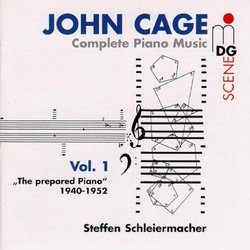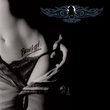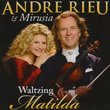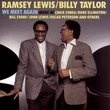| All Artists: John [1] Cage, Steffen Schleiermacher Title: John Cage: Complete Piano Music, Vol. 1 Members Wishing: 2 Total Copies: 0 Label: MD&G Records Release Date: 10/21/1997 Album Type: Import Genres: Dance & Electronic, Classical Styles: Techno, Chamber Music, Forms & Genres, Short Forms, Historical Periods, Classical (c.1770-1830), Modern, 20th, & 21st Century, Instruments, Keyboard Number of Discs: 3 SwapaCD Credits: 3 UPC: 760623078120 |
Search - John [1] Cage, Steffen Schleiermacher :: John Cage: Complete Piano Music, Vol. 1
 | John [1] Cage, Steffen Schleiermacher John Cage: Complete Piano Music, Vol. 1 Genres: Dance & Electronic, Classical
|
Larger Image |
CD DetailsSimilar CDs
|
CD ReviewsEarly beautiful meditative Cage scarecrow | Chicago, Illinois United States | 01/25/2005 (5 out of 5 stars) "You will not be disappointed or dismissive of this early music, primarily for prepared piano, an instrument that has sort of fallen out of existence. I know of no vigorous repertoire that had followed Cage's innovations. The idea for placing nuts and bolts, woodscrews and erasers between the piano's internal strings was from Henry Cowell, a piano timbral innovator in his own right. Cage developed the instrument as an accompaniment to the performances of Merce Cunningham dance in the early Forties, and the idea simple took off toward theatre,toward performance art and associative images, Lincoln Kirstein also commissioned works from Cage. Well here you get the full weight of this repertoire, and my favorite is "Perilous Night", it reveals the "subjectivity" residing in Cage despite his numerous attempts to circumvent his persona, Well it comes through here although you always sense that timbre and rhythm remain the primary focus of this early music.Also the un=prepared works, single exposed threadbare lines are what interested early Cage .The timbral differences of the piano preparation are interesting in and of itself and seem to engage concept and image;as "prelude and meditation",a minimal work of three four lines, only a few strings are prepared, or the "Music for Marcel Duchamp" where only the middle register of the piano is utilized with a single melody written in alto clef. This work has more a lyric interest yet having a deeply sombre feel to it.
The more expansive "Sonatas and Interludes" are all here, and there are now dozens of recordings,(like a standard within the repertoire,as Chopin's "preludes") and some play them fast(Joshua Pierce) others slow. I prefer the John Tilbury, Decca recording (now unavailable) but here as well the renderings/readings are quite engaging. The negative feature to all this music is that the timbre seems to never suggest anything more than what it is, it is like anything remains beautiful. Perhaps that is why there has not been a "thousand flowers" blooming from this instrument. It has astatic quality to it,one-dimensional. Cage you feel knew this and did introduce as much variety, distributions of densities, and rhythms, textures, and the structural plan as well adheres to maintaining an agenda for variety. The "Sonatas" here being the primary focus, the exposition, and the "Interludes" the digression relief from the gestural whole." |

 Track Listings (16) - Disc #1
Track Listings (16) - Disc #1


